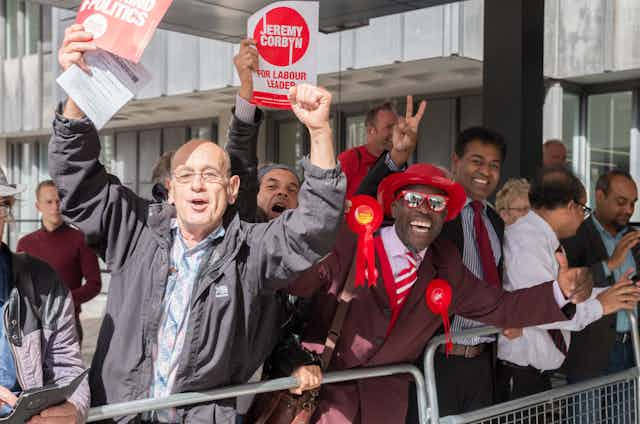For party funding researchers, the year after a general election can produce days of excitement akin to Christmas. If your idea of fun is rifling through the accounts of political parties and updating long pored over spreadsheets, it’s a thrilling time.
This year has been a vintage one, beginning as it did with news of Labour’s near £600 bill for chicken suits and continuing with the more serious story of Conservative election spending.
Now the yearly party accounts for 2015 have been released, shedding some light on one of the biggest questions in Britain this summer: is Labour thriving or disintegrating under the leadership of Jeremy Corbyn?
Signing up
Anyone with a passing interest in politics can tell you that Labour had an eventful 2015 (and 2016). In the 12 months since Corbyn was elected by a huge majority, buoyed by a flood of new members and supporters (who paid £3 to vote in the last leadership election), there has been almost constant arguing. The majority of his shadow cabinet resigned in the wake of the EU referendum and now a second leadership contest is underway.
But these latest accounts highlight the Corbyn effect. They show that Labour raised a whopping £9,532,000 in membership subscriptions in 2015 (compared to the Conservatives’ £823,000). Labour has long raised the most among the political parties, and subscriptions have been increasing steadily since 2010. But to put this in context, the party recorded raising £5,971,000 in the 2014 accounts – a significantly lower amount.
That’s even before the huge influx of members after the latest leadership election was announced.
Of course the figures can’t provide detail on why people have joined and whether they support or oppose Corbyn. But they help us understand the financial transformation of the Labour party. What is most noticeable from these figures is the vast rise in money raised through membership fees.
What little we know about the new members includes the fact that they don’t tend to get actively involved in campaigning for the Labour party. But we can see that they are certainly more than paying their way.
The accounts also show that donations to the Labour party continued to rise in 2015, leaving it in a good financial position. However, it’s too soon to put paid to fears that donations would drop off under Corbyn. Most of this money will have been raised pre-Corbyn for the general election. Labour party income also tends to rise and fall with the general election cycle. We should be wary of reading too much into donation patterns in the short term.

That said, even if donations do drop off now, Corbyn (and his accountants) might take comfort in the fact that some of this shortfall can be made up by the membership fees of burgeoning Labour rank and file. Though it should be noted that these impressive figures still only account for about 18% of Labour’s total 2015 income.
A changing party
These accounts are also a representation of what we might understand as the tension between old Labour members and new Labour members. Membership dues have nearly doubled and the likelihood is that the 2016 accounts will show a further rise. These figures are a further confirmation that we are, to all intents and purposes, looking at a new Labour party. With all the challenges that this presents organisationally.
It’s worth noting that although the Conservatives outspent the Labour party at the general election, the figures show that Labour continued its streak (from 2010 onwards) of raising – and spending – more money for the financial year overall (£51,153,000 to £41,887,000). Further evidence that simply having money isn’t everything, it’s what you do with it that counts.
Corbyn often looks at his strongest when he is addressing party members, and he in turn seems to energise them. As these figures show – they certainly repay the favour.

